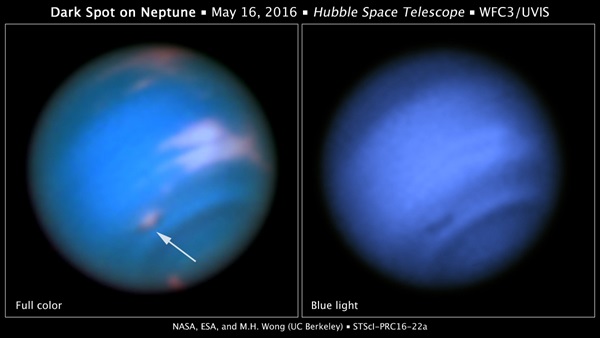Key Takeaways:
It’s not every day that a planet sprouts a new feature, but Hubble seems to have found a brand new “spot” on the blue ice giant Neptune.
Neptune’s “Great Dark Spot” discovered by the Voyager 2 spacecraft in 1989 revealed a storm battering around the atmosphere at 1,500 MPH, like Jupiter’s red spot in miniature. The anticyclone cleared up by 1994, as had a smaller storm. The new spot is likely a related phenomenon.
“The fact that this dark spot has bright companions does suggest it is similar to the Great Dark Spot seen by Voyager, and the dark spot seen by Hubble in 1994,” Heidi Hammel, a researcher at the Space Science Institute, said in an email.
The storms form when air below is disrupted and pushed upward, where it freezes into ice crystals made mostly of methane. There have been indications since last year that such an event might be taking place on the ice giant, but Hubble is the only telescope with the capabilities to make the necessary observations.
Hammel says there’s some evidence of structure within the storm, with an opening in the cloud layers leading to a raging storm below. Follow-up observations could give insight into how they form and how they break apart. Hubble will have to do the heavy lifting, especially since no spacecraft has visited Neptune since 1989 (though there’s some talk within NASA of trying to change that.)
“We speculate that these dark spots on Neptune (which are most visible at blue wavelengths) are probably ‘clear’ areas, openings in the cloud decks that see to deeper layers,” she says. “The bright companions (which are most visible at redder wavelengths) are thought to be higher-altitude clouds.”










